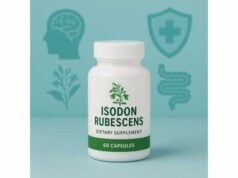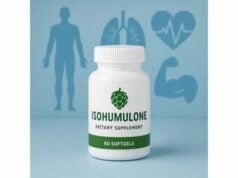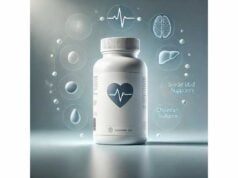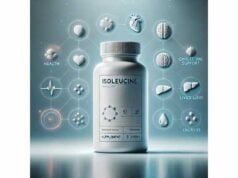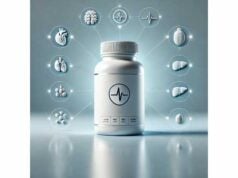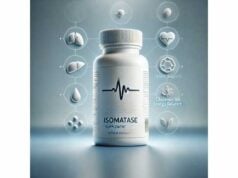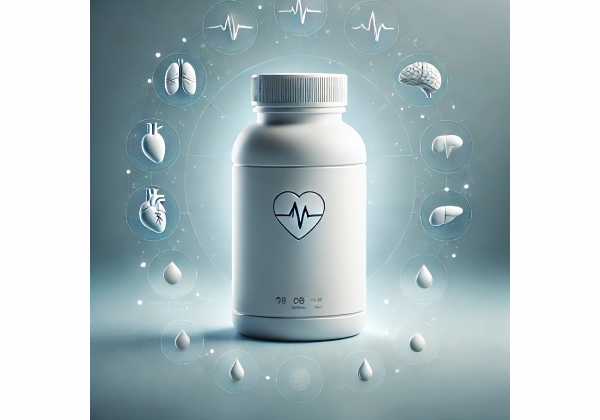
Isoquercitrin is a naturally occurring flavonoid (quercetin-3-O-glucoside) present in apples, onions, green tea, and many botanical extracts. It is valued for antioxidant and anti-inflammatory activity, but it also has practical advantages over quercetin: the glucose group improves water solubility and can enhance intestinal uptake. In supplements, you’ll see isoquercitrin in two main forms—native isoquercitrin and enzymatically modified isoquercitrin (EMIQ), a family of α-glucosylated derivatives created to boost bioavailability even further. Interest spans metabolic health, vascular support, allergy relief, exercise recovery, and liver protection. This guide translates complex biochemistry into clear, step-by-step advice: what isoquercitrin does, how to use it, which forms to consider, realistic outcomes, and who should avoid it. Our aim is practical and people-first—help you decide if isoquercitrin earns a place in your routine, how to trial it safely, and how to measure whether it’s helping.
Key Insights
- Supports endothelial function, allergy symptom control, and exercise recovery in small human studies; broader benefits remain emerging.
- Bioavailability is formulation-dependent; EMIQ generally absorbs better than quercetin, rutin, or native isoquercitrin.
- Trial 100–300 mg/day of isoquercitrin or 50–200 mg/day of EMIQ with meals for 8–12 weeks, adjusting to body weight and tolerance.
- Avoid during pregnancy and breastfeeding, in children, and with narrow-therapeutic-index drugs unless supervised.
- Possible interactions with antiplatelets/anticoagulants and select metabolic enzymes; space doses away from medications.
Table of Contents
- What is isoquercitrin and how it works
- Benefits: what results to expect
- Dosage: how to take it
- Bioavailability and formulations
- Safety, side effects, who should avoid
- Evidence summary and practical checklist
What is isoquercitrin and how it works
Isoquercitrin is quercetin linked to a single glucose at the 3-position (quercetin-3-O-glucoside). That small structural tweak matters: it increases aqueous solubility, facilitates interaction with intestinal transporters (including SGLT-1 and lactase-phlorizin hydrolase pathways), and often leads to higher exposure to quercetin metabolites than the aglycone form at the same labeled milligrams. Your body also forms quercetin and its conjugates after isoquercitrin ingestion, so some benefits overlap with quercetin—but with different kinetics.
Mechanistically, isoquercitrin is a signaling modulator rather than a simple “free radical sponge.” Core actions include:
- Antioxidant defense upregulation: It nudges the Nrf2 pathway, elevating enzymes like heme oxygenase-1 and glutathione-related systems. This improves cellular handling of oxidative stress beyond passive scavenging.
- Inflammation control: Isoquercitrin can temper NF-κB/MAPK signaling, lowering pro-inflammatory cytokines and enzymes that drive tissue irritation.
- Endothelial support: It improves nitric-oxide (NO) bioavailability and reduces oxidative burden in blood vessels, which can translate into better flow-mediated dilation in at-risk adults.
- Allergy modulation: In clinical and experimental contexts, quercetin glycosides stabilize mast cells and can reduce ocular/nasal symptoms during seasonal pollen exposure.
- Metabolic effects: In muscle and adipose models, isoquercitrin enhances GLUT4 translocation, improves insulin signaling, and influences lipid handling—mechanisms aligned with steadier post-meal responses.
- Exercise recovery: By curbing exercise-induced oxidative stress, isoquercitrin (especially EMIQ) has been associated with better body-composition trends and redox markers in trained athletes.
Absorbed isoquercitrin and its derivatives circulate largely as glucuronide and sulfate conjugates. Importantly, these conjugates can be deconjugated at inflamed tissues, locally releasing active aglycone—a shipping-and-unboxing design the body uses with many polyphenols. Practical implication: modest oral doses can still matter at sites of stress.
Where isoquercitrin fits best: as a steadying influence to support endothelial health, redox balance, seasonal comfort, and training recovery—especially when paired with sleep, movement, and a plant-forward diet.
Benefits: what results to expect
Evidence ranges from human intervention studies with isoquercitrin derivatives (notably EMIQ) to mechanistic and animal research. Here’s what is most realistic today:
Endothelial function (vascular health).
In volunteers at risk of cardiovascular disease, acute EMIQ ingestion improved endothelial function (assessed by flow-mediated dilation) alongside higher circulating quercetin metabolites. Endothelial function is a dynamic marker of vascular health; even small improvements suggest better nitric-oxide signaling and lower oxidative stress. While one acute study cannot define long-term outcomes, it supports a short-term vascular “tune-up” effect.
Allergy symptom relief (seasonal rhinitis).
A randomized, double-blind, placebo-controlled trial found that 100 mg/day EMIQ reduced ocular itching and improved composite symptom scores in individuals with Japanese cedar pollinosis. Benefits were most evident during peak weeks, aligning with mast-cell stabilization and reduced local inflammation. Practical expectation: incremental symptom easing, best as part of a broader plan (saline rinses, avoidance measures, and, if needed, clinician-guided pharmacotherapy).
Exercise recovery and body composition (trained athletes).
In American football players, EMIQ in a protein powder over four months improved antioxidant indices and was associated with gains in muscle mass relative to placebo. The likely mechanism is a more favorable redox environment that supports training adaptations while curbing excessive oxidative strain. Expect small but meaningful nudges, not dramatic transformations—consistent programming and nutrition remain decisive.
Metabolic support (glucose and lipids).
Isoquercitrin enhances GLUT4 translocation at physiologic concentrations in muscle models and can influence hepatic lipid pathways. Human data directly testing isolated isoquercitrin are limited; however, quercetin glycosides (including isoquercitrin) have improved post-meal glycemia in controlled settings. Practically, pairing isoquercitrin with soluble fiber and post-meal walking is a reasonable plan for smoother glucose excursions.
Liver resilience and cellular protection.
Preclinical work shows reduced oxidative and inflammatory damage in the liver and myocardium under toxic or metabolic stress. These signals support exploratory use for people pursuing long-horizon cardiometabolic health, but they do not replace medical care for active disease.
Skin and connective-tissue stressors.
By upregulating endogenous defenses, isoquercitrin may help tissues tolerate UV and environmental stress. Oral use for appearance goals remains exploratory; sun protection and nutrition stay paramount.
What not to expect.
Isoquercitrin is not a standalone treatment for hypertension, diabetes, or dyslipidemia. Claims of broad anticancer efficacy belong to the lab, not the clinic. In normal life, benefits—when present—are incremental, more noticeable under stress (heavy training weeks, high pollen days, post-meal spikes) than at rest.
How to track impact.
Pick stable metrics: flow-mediated dilation (if accessible), two-hour post-meal glucose, triglycerides/non-HDL cholesterol, seasonal symptom scores, or training log markers (session RPE, soreness, recovery). Compare consistent baselines to 8–12 weeks after daily use.
Dosage: how to take it
There is no official therapeutic dose, and products vary widely. Use a structured, time-boxed trial with clear goals.
Forms you’ll see
- Isoquercitrin (IQC): the native 3-O-glucoside of quercetin.
- Enzymatically modified isoquercitrin (EMIQ): a family of α-glucosylated isoquercitrin oligomers (often labeled EMIQ or AGIQ) designed for higher solubility and absorption.
Suggested adult ranges
- Isoquercitrin (IQC): 100–300 mg/day, taken with meals.
- EMIQ: 50–200 mg/day, taken with meals (EMIQ is generally more bioavailable, so lower milligram amounts can suffice).
- Body-weight method (either form): 0.5–2.0 mg/kg/day, titrated by response and tolerance. For a 70-kg adult, that’s 35–140 mg/day (lean toward the lower end with EMIQ).
How to start
- Define your outcome (e.g., fewer peak allergy symptoms; better post-meal glucose; training recovery).
- Begin low for 7–10 days: IQC 100 mg/day or EMIQ 50–100 mg/day with the largest meal.
- Titrate every 1–2 weeks if well tolerated: IQC up to 200–300 mg/day; EMIQ up to 150–200 mg/day.
- Evaluate at 8–12 weeks. If there’s no measurable benefit or side effects appear, stop rather than escalating indefinitely.
Timing
- Take with mixed meals that include some fat to support absorption and reduce GI upset.
- For post-meal goals, align one dose with your highest-glycemic meal.
- Athletes can place a dose near training (with the pre- or post-exercise meal), especially during heavy blocks.
Stacking (keep it simple)
- Allergy season: combine with saline nasal rinses and environmental controls; do not replace prescribed therapies.
- Metabolic aims: pair with viscous fiber (oats, psyllium) and a 10–15-minute walk after meals.
- Training: integrate with sound protein intake (1.6–2.2 g/kg/day), sleep, and periodized programming.
Choosing a product
- Look for explicit isoquercitrin or EMIQ content (mg per serving)—avoid vague “quercetin complex” labels.
- Prefer brands with third-party Certificates of Analysis (identity, potency, heavy metals, microbes).
- For IQC-γ-cyclodextrin or other enhanced forms, ensure the label names the carrier and standardization.
When food is enough
- Diets rich in flavonoid-dense foods (apples, onions, berries, tea, cocoa, herbs) already deliver diverse polyphenols. If your baseline diet is strong, supplemental isoquercitrin may add little unless you’re targeting a specific stressor or season.
Bioavailability and formulations
Isoquercitrin’s real-world performance depends on chemistry, delivery, and your physiology. Five factors matter most:
1) Why isoquercitrin can beat quercetin at the same milligrams
The 3-O-glucose group increases solubility and leverages intestinal transporters, enabling efficient absorption and higher circulating metabolites. Many studies report superior exposure from glycosides compared with quercetin aglycone at equal doses.
2) Why EMIQ often wins on exposure
EMIQ adds short glucose chains (α-oligoglucosides) to isoquercitrin, dramatically improving water solubility, stability, and thermal resistance. Across animal and human work, EMIQ shows multiples-higher bioavailability than quercetin, rutin, and frequently native isoquercitrin—hence lower milligram targets for similar systemic metabolite levels.
3) Cyclodextrin complexes and carriers
Complexing isoquercitrin with γ-cyclodextrin (γ-CD) or using oil dispersions/microencapsulation can further enhance dissolution and permeability, sometimes multiplying AUC in both animals and humans. If you change brands and notice a different effect at the same label dose, formulation is the likely reason.
4) Conjugation is part of the plan
After uptake, isoquercitrin converts to quercetin conjugates (glucuronides/sulfates) that circulate safely. Tissues experiencing oxidative/inflammatory stress can deconjugate these forms, locally regenerating active aglycone—explaining why moderate doses may still exert targeted effects.
5) Your microbiome and meals
A fiber-fed, diverse microbiome metabolizes flavonoids more predictably. Taking isoquercitrin with meals containing some fat improves comfort and absorption. Alcohol is not a delivery aid; it adds irritant load without benefit.
Practical bioavailability tips
- Take with food—ideally 10–20 g of fat in the meal (e.g., yogurt with nuts, eggs with olive oil, salmon).
- Split the dose if you experience reflux or queasiness.
- Maintain daily fiber (oats, legumes, fruit, vegetables) to support microbiome stability.
- If switching products, re-baseline at the new dose for 2–4 weeks before judging.
Safety, side effects, who should avoid
Isoquercitrin and EMIQ have favorable safety signals in animal toxicology and short-term human studies. Still, caution is wise when using concentrated supplements.
Common, usually mild effects
- Digestive: nausea, fullness, or loose stools—often improve by taking with meals or lowering the dose.
- Headache or light fatigue: uncommon; reassess dose or timing if persistent.
- Allergy: rare with isolated compounds; more likely with complex plant extracts. Stop immediately if you notice hives, wheeze, or swelling.
Medication and condition cautions
- Antiplatelets/anticoagulants: Flavonoids can modulate platelet activity; discuss with your prescriber if using warfarin or direct oral anticoagulants.
- Drug metabolism/transporters: Polyphenols may influence certain CYPs, UGTs, and transporters. If you take narrow-therapeutic-index drugs (e.g., transplant, oncology, select antiarrhythmics), avoid unsupervised supplementation.
- Peri-procedure: Hold non-essential supplements 1–2 weeks before scheduled procedures unless your care team advises otherwise.
Who should avoid (unless supervised)
- Pregnant or breastfeeding individuals (insufficient data).
- Children and adolescents (no established dosing).
- People with active liver disease or unexplained liver-test abnormalities.
- Anyone on complex polypharmacy or drugs with tight dosing windows.
Smart safety steps for everyone else
- Define your endpoint (e.g., seasonal symptom score, two-hour post-meal glucose).
- Start low (IQC 100 mg/day or EMIQ 50–100 mg/day) with food.
- Track for 8–12 weeks; stop if no benefit or if adverse effects appear.
- Share your plan with your clinician, especially if you take daily medications.
- Store properly—cool, dry, tightly sealed; avoid heat that degrades flavonoids.
Evidence summary and practical checklist
What the strongest studies show
- Endothelial function (acute, human): A controlled study in at-risk volunteers found EMIQ improved endothelial function and raised circulating quercetin metabolites. This supports a vascular-health angle and validates rapid systemic exposure from EMIQ.
- Allergy symptoms (human RCT): In cedar pollinosis, 100 mg/day EMIQ for eight weeks reduced ocular symptoms versus placebo during peak pollen periods. Benefits were modest but clinically relevant for daily comfort.
- Exercise adaptation (human, athletes): Over four months of training, EMIQ in protein powder improved antioxidant indices and supported muscle-mass gains in American football players relative to placebo—consistent with better redox balance under high training stress.
- Bioavailability (reviews, PK, formulation): EMIQ exhibits markedly higher bioavailability than quercetin and rutin. Enhanced carriers (e.g., γ-cyclodextrin) can further raise exposure.
- Safety (toxicology): Subchronic data on isoquercitrin-γ-cyclodextrin in rats found no treatment-related adverse findings at high dietary levels, supporting a comfortable safety margin for food-use derivatives.
Where evidence is thin
- Long-term outcomes (lipids, A1c, events) with isolated isoquercitrin are not yet defined.
- Head-to-head dosing (IQC vs. EMIQ vs. aglycone quercetin) in humans remains limited.
- Drug-interaction trials are sparse; prudence is warranted in medically complex patients.
A practical four-step plan
- Pick your use-case. Seasonal support, smoother post-meal glucose, training recovery, or general vascular tune-up.
- Choose the form. If cost allows and you want efficiency, select EMIQ; otherwise use isoquercitrin and set expectations accordingly.
- Dose and time. Start at IQC 100 mg/day or EMIQ 50–100 mg/day with a meal. Titrate as needed after 1–2 weeks.
- Measure fairly. Use consistent meals, training loads, and testing windows. Decide at 8–12 weeks whether to continue.
Bottom line
Isoquercitrin (and EMIQ) is a smartly engineered route to quercetin-family benefits—often with better comfort and absorption. Expect small, compounding gains, not sweeping cures. Pair it with evidence-based lifestyle steps, track objective outcomes, and keep your clinician in the loop.
References
- Enzymatically Modified Isoquercitrin: Production, Metabolism, Bioavailability, Toxicity, Pharmacology, and Related Molecular Mechanisms (2022)
- Effects of enzymatically modified isoquercitrin in supplementary protein powder on athlete body composition: a randomized, placebo-controlled, double-blind trial (2019)
- Effect of enzymatically modified isoquercitrin, a flavonoid, on symptoms of Japanese cedar pollinosis: a randomized double-blind placebo-controlled trial (2009)
- Enzymatically modified isoquercitrin improves endothelial function in volunteers at risk of cardiovascular disease (2020)
- 13-Weeks subchronic toxicity of isoquercitrin-γ-cyclodextrin (IQC-γCD) molecular inclusion complex in Sprague-Dawley rats (2021)
Disclaimer
This guide is educational and does not replace professional medical advice, diagnosis, or treatment. Isoquercitrin and EMIQ can interact with medications and health conditions, and long-term safety for high-dose, isolated use in humans is not fully established. Consult a licensed healthcare professional before starting, stopping, or combining supplements—especially if you are pregnant or breastfeeding, have liver disease, or take prescription drugs (including antiplatelets or anticoagulants). If you choose to try isoquercitrin, use the lowest effective dose with meals, track objective outcomes over 8–12 weeks, and discontinue if you experience adverse effects or no clear benefit.
If this article helped you, please consider sharing it on Facebook, X (formerly Twitter), or your preferred platform, and follow us for more evidence-based health content. Your support helps us continue creating high-quality resources.

